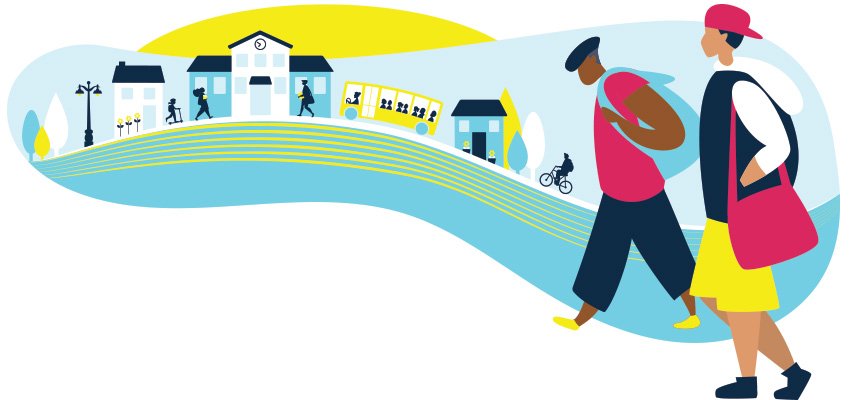Active transportation

Active Transportation (AT) is any form of human powered travel, most commonly walking, cycling and using a wheelchair, but also includes activities such as skateboarding. In the context of public health, the term also includes public transit because transit trips typically start or end with active transportation.
Active transportation is associated with positive health outcomes and helps individuals meet recommended levels of physical activity.
Active transportation in the KFL&A region
- Kingston’s Active Transportation Master Plan is a roadmap for investing in walking, cycling and other forms of active transportation.
- Kingston Transit provides bus service within the city of Kingston, and some areas outside of the city. For information about rates please see Transit Fares & Passes. The Affordable Transit Pass is a reduced-cost monthly transit pass for residents from lower-income households who qualify through the Municipal Fee Assistance Program (MFAP) All buses have a bike rack so you can Rack and Roll. If you ride the bus after dark you can also request a stop closer to your destination.
- The City of Kingston has sidewalk and sidewalk and road plowing priorities and information to help pedestrians, cyclists, emergency vehicles, and motorists move safely.
- Report concerns about cycling or walking to the City by request form or by calling 613-546-0000.
- The Kingston Coalition for Active Transportation is a diverse group of community members working to facilitate walking, wheeling, and using public transit in Kingston and area.
- The Town of Greater Napanee has daily bus stops through the Deseronto Transit Service.
- The County of Frontenac has a Regional Active Transportation Plan (2019). The County of Lennox & Addington Strategic Plan (2023 to 2026) involves updating the County's transportation master plan to include active transportation networks.
- The County of Lennox & Addington Strategic Plan (2023 to 2026) involves updating the County's transportation master plan to include active transportation networks.
Active school travel
Walking or wheeling (cycling, scootering, skateboarding, etc.) at least part of the way to school promotes your child’s health and wellbeing. Being active on the trip to school also helps children to arrive more alert and ready to learn.
Walking, wheeling, or taking the bus to school also reduces car traffic around the school making the area safer for everyone.
How you can help your child get to school using active travel: |
|











